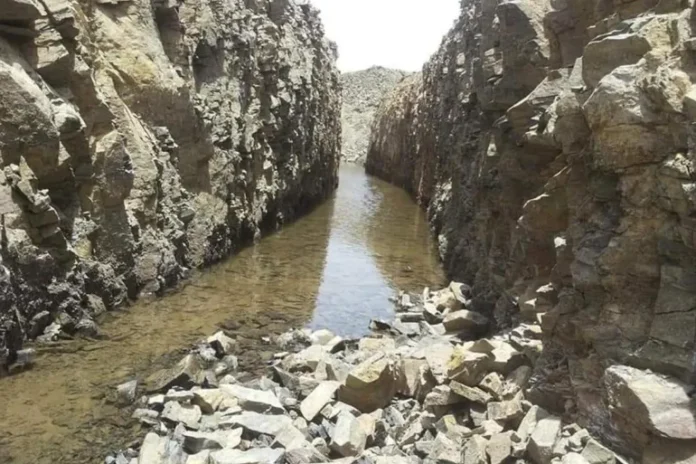In northern Sudan, the golden sands of the desert intertwine with the rich history of the ancient Nubian civilization, and the hot springs of Akasha Baths flow, carrying with them a unique cultural heritage that spans thousands of years.
These are not simply warm waters emerging from the earth’s depths; they serve as a living memory connecting the present to the era of the Kingdom of Napata and the Nubian king “Kashta,” offering a rare destination that combines historical value, touristic appeal, and therapeutic benefits whose secrets remain only partially revealed.
Despite challenges—from natural disasters that submerged them for years to resource shortages that kept them out of the spotlight—Akasha Baths have endured thanks to the resilience of the local community, manifest in the youth-led and development initiatives that rehabilitated the site. These tireless efforts aim to transform this forgotten treasure into an integrated touristic and therapeutic destination befitting its true worth.
A Sanctuary of Healing in the Heart of the Desert
Akasha Baths are located in Dalgo locality, near the town of Abri in the Northern State, about 775 kilometers north of the capital, Khartoum. There, among the hills and plains of the Nubian Basin, the hot waters spring naturally from the western highlands, with temperatures ranging between 38 and 45°C. The real value of these springs lies in their rich composition of sulfur and salts, granting them unique medicinal qualities.
According to physical therapy specialists, these baths serve as an effective sanctuary for treating chronic joint inflammation, rheumatism, and muscle relaxation. They also help to alleviate skin ailments such as eczema, psoriasis, vitiligo, and acne. These benefits have made the baths a recurring destination for researchers, history students, and those seeking natural healing from Sudan and neighboring countries.
These therapeutic waters collect in small pools surrounded by sand dunes and rocky formations, giving the place a distinctive character that captivates researchers’ interest and makes it increasingly important for ecological tourism. This spring has also revitalized the neighboring village of Akasha, where the water flows into a carefully designed chamber measuring approximately 3.5 meters long, 2 meters wide, and 1.5 meters high, sheltering this enchanting source.
Nubian History and the Legacy of Neglect
It is believed that Akasha Baths were known and used as far back as the period of ancient Nubian kingdoms—Kush, Napata, and Meroë. Historians suggest their use dates back to the reign of the famous Nubian king Kashta, a prominent ruler of the 25th Dynasty who had significant influence in the region. The historical significance doesn’t end with the baths; the surrounding area is rich with Nubian antiquities, including temples, burial sites, and rocks inscribed with hieroglyphics, further boosting its value as a historical and touristic site.
Despite their ranking among Sudan’s tourist attractions, the baths have not received adequate attention since the country’s independence, enduring prolonged periods of neglect alongside harsh natural events. In 1988, a flood of the Nile River inundated the area, burying the baths under layers of silt that smothered the site for about nine years without any major rehabilitation efforts.
Amid institutional absence, an inspiring local story emerged. In 2017, a group of local youth founded the “Akasha Baths Charitable Organization” to revive this heritage. Through self-driven efforts, the organization addressed issues of water drainage, conducted geophysical surveys, and utilized modern drilling techniques to reopen the spring.
These grassroots efforts, alongside contributions from the private sector, aim to preserve the site and provide basic services for a growing number of visitors, especially in winter, from various Sudanese states like Khartoum, Darfur, and Kordofan, as well as tourists from Egypt, Libya, and Chad. Sudanese expatriates also fuel the growth of therapeutic tourism in the region during their vacations.
Yet, the area still lacks basic infrastructure, such as hotels, modern medical facilities, and comprehensive touristic services. This has weakened investment, even as Sudan’s Ministry of Culture, Information, and Tourism underscores the importance of developing the site and transforming it into an integrated resort.
Thus, Akasha Baths are far more than just hot springs. They are a testament to the convergence of geography and history, a living memory of ancient Nubian heritage, a beacon for eco- and therapeutic tourism, and a true reflection of the Sudanese people’s connection to their land and determination to preserve its natural treasures against all odds.
Source: Al Jazeera / Qatar News Agency (QNA)


